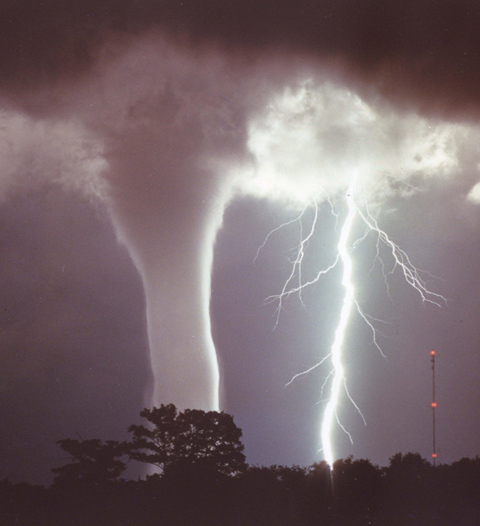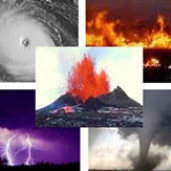
Most of us have seen a tornado on the news and the Internet, but a vast majority of people have never personally witnessed the power and destruction of a twister.
The U.S. averages about 1,200 tornadoes a year and Canada is ranked
#2 in volume of tornadoes (averaging about 80 per year) with several
high risk areas mostly in central provinces.
Nearly 3/4 of the world’s tornadoes occur in the U.S. annually with a majority of them touching down in “tornado alley” across the central U. S.
But keep in mind tornadoes can occur anywhere in the U.S. — with sightings in all 50 states — and across every continent except Antarctica.
Did you know…
- even though the National Weather Service (formerly called the Weather Bureau) has been tracking storms since 1870 … they were not allowed to use the word tornado in its forecasts for fear of panic until 1950..?!
- According to NOAA, 2004 had a record 1,817 tornado reports in the U.S.
- In 1974, during a 21-hour period, 148 tornadoes ripped through 13 states and 1 province between Alabama and Ontario, Canada killing 315 people.
- Tornadoes can last for several seconds or more than an hour, but most last less than 10 minutes.
- Peak tornado season in the southern states is March through May; in the northern states, it is late spring through early summer, but tornadoes can happen at any time of the year. Also, tornadoes can also happen at any time of day or night, but most tornadoes occur between 4–9 p.m.
- The 1925 Tri-State Tornado rode a straight-line path for 3.5 hours across 219 miles of Missouri, southern Illinois and Indiana, making it the longest single tornado track anywhere in the world. With a mile-wide diameter it looked wider than it was tall and caused 695 deaths — a U.S. record for a single tornado — and injured thousands.
- A waterspout is a tornado over water but isn’t recorded until it hits land.
- The force of a tornado can strip asphalt chunks off roads, rip clothes off people and pluck feathers off chickens.
Tornado basics
According to the National Severe Storms Laboratory tornadoes are rare and unpredictable, but NSSL admits experts don’t fully understand how tornadoes form.
Basically a tornado is a narrow, violently rotating column of air that extends from the base of a thunderstorm to the ground. Because wind is invisible, it is hard to see a tornado unless it forms a condensation funnel made up of water droplets, dust and debris. Tornadoes are the most violent of all atmospheric storms.
The most destructive and deadly tornadoes occur from supercells,
which are rotating thunderstorms with a well-defined radar circulation
called a mesocyclone. (Supercells can also produce damaging hail, severe
non-tornadic winds, unusually frequent lightning, and flash floods.)
Tornado formation is believed to be dictated mainly by things which happen on the storm scale, in and around the mesocyclone.
Learn more in below 2 educational videos and download a free 65-page portion of our USFRA Family Preparedness Guide here
Anatomy of a Tornado by TWC’s Jim Cantore from 2015…
This 2018 video by Cantore and TWC is longer but takes you inside a storm like you’ve never seen before with amazing graphics…
Again - consider downloading and sharing a free 65-page portion of our custom USFRA Family Preparedness Guide with tips about things to do before, during and after various types of disasters and emergencies, and order the full 286-pg PDF ebook for only $5.00 U.S. (70% off list) + proceeds benefit USFRA -- learn more



